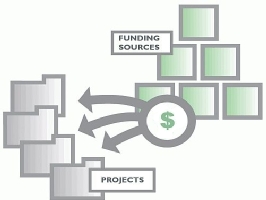Avoiding scope creep on any project should not be the object of the project manager; the focus when it comes to scope creep is to ensure that it is controlled and does not get out of hand. According to Portny, Mantel, Meredith, Shafer, Sutton, and Kramer “Scope creep is inevitable with projects, but a change control system can lessen it’s stressful aspects (p. 348, 2008).
I can think of quite a number of projects which went out of control but I think I will discuss a website revamp project. This project has been going on for longer than any project of that sort should take. Stakeholders felt they should all have control over the turnout of the project and as much as Dr. Stolovitch pointed out the project manager is not God on projects it actually became necessary to actually put a cap on the direction that the “suggestions” were taking the project (n.d.) The were quite a number of scope creep issues: –
- It was not clear what key stakeholders meant by revamping the website and so the project manager was expected to come up with a model for the revamped website
- At almost every check-in, the key stakeholders had something new they wanted to add and could not differentiate from what was essential
- When the project design was almost done, it was decided to conduct a survey from various categories of users for their input; of course the suggestions were all over the place.
Naturally a blame game ensued with the untrained project manager being blamed for delays in the project. It was later decided that the project needed to be streamlined into manageable parts with key, essential deliverables prioritized and then any add ons would be added to the scheduled as upgrades.
Honestly, if I were to be responsible for such a project some year’s back I would probably have made the same mistakes. After learning about scope creep and change control, I realize that the Project Manager has a duty to keep a tight reign on the project but not too tight as to stifle the project. I also like the idea of a sign-off document for change of scope (Stolovitch, n.d.), which will help keep track of the kinds of requests, that comes in. Essentially, I would implement a change control system that is both reflective and purposeful and would allow for scope creep to be monitored and controlled (Lynch and Roecker, 2007).
References:
Lynch, M. M., & Roecker, J. (2007). Project managing e learning: A handbook for successful design, delivery, and management. London: Routledge. Copyright by Taylor & Francis Group, LLC.
Portny, S. E., Mantel, S. J., Meredith, J. R., Shafer, S. M., Sutton, M. M., & Kramer, B. E. (2008). Project management: Planning, scheduling, and controlling projects. Hoboken, NJ: John Wiley & Sons, Inc.
Laureate Education (Producer). (n.d.). Monitoring projects [Video file]. Retrieved from


